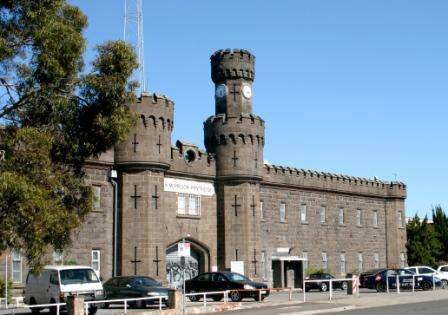| Back to search results » | Back to search page » |
|
HM Prison Pentridge
LocationChamp, Urquhart Streets, Murray & Sydney Roads, Pentridge Boulevard, wardens Walk, Quarry Circuit, Woiwurung Crescent & Stockade Avenue, COBURG VIC 3058 - Property No B1303
File NumberB1303LevelState |
|
Statement of Significance
The site and buildings known as Pentridge Prison is of social and historical significance at the State level. Most of the 19th century buildings and dividing walls, fences and gates are of State architectural significance, while other early 20th century structures are of Regional significance. As Victoria's central prison until its closure in 1996, it was the most well-known and used gaol in the State's history. Pentridge became a word synonymous with prison. Most of Victoria's convicted and notorious criminals were gaoled there between 1900 and the 1990's and it was the site of many hangings in the same period. In 1967, Ronald Ryan , who was convicted of the murder of a prison officer during an escape from Pentridge , became the last person in Victoria to be hanged. Established in 1851 and largely constructed in the period 1858 - 64, Pentridge is the largest prison complex constructed in Victoria in the 19th century, and operated as the central establishment in the wider prison system from the early 1860's.. the complex of buildings which remains on site demonstrates a number of phases in the development of the penal system, including the 'separate system' which dominated penology in Victoria in the 19th century. Most of the major elements of the 19th century complex survive and are largely intact, and together clearly demonstrate the planning and functioning of the prison in the 19th century and the main functional elements of the separate system. The range of cell blocks, workshops and other buildings, the relatively dispersed layout of the buildings, and the large scale of the site as a whole contrast with other 19th century prisons in Victoria and demonstrate the unique character of Pentridge as the principal penal establishment for long-term prisoners within the 19th century Victorian prison system. The planning of A, B and D Divisions are representative examples of the overwhelming influence and continuing development of British planning models and the separate system on prison design in Australia from the 1830's until the end of the 19th century. F Division is a rare surviving example of early 19th century prison and hospital design. Pentridge is also significant in the history of child welfare in Victoria. It was the location of reformatories for both girls and boys established following the findings of the Stawell Royal Commission of 1870. The prison complex includes a purpose-built reformatory of 1875 (G Division) constructed as the Jika Reformatory for Protestant Girls, which operated between 1875 and 1893. The aesthetic significance of the 19th century prison buildings at Pentridge derives from their monumental scale and austere Classical style , expressive of the requirements of containment and order and typical of prison buildings constructed in Victoria in the 1850's and 1860's. it also derives from the almost ubiquitous use of ashlar bluestone, much of it quarried on site. The original ventilation systems in A, B and D Divisions and the surviving original cisterns and other elements of the water supply system in B Division are of technological significance. The apparently intact thermo-ventilation system in B Division is of particular significance. Among the 20th century developments at the prison, K Division, opened in 1980, is significant in both a planning and architectural sense. One of several new prison buildings constructed in Australia in the 1970's and 1980's which experimented with new approaches to planning and design. It is also of interest for extraordinarily strong architectural style deriving from science fiction imagery and 1960's architectural theory. (Report adapted from Allom Lovell & Associates, Pentridge Conservation Management Plan of August 1996)
Group
Law Enforcement
Category
Prison




